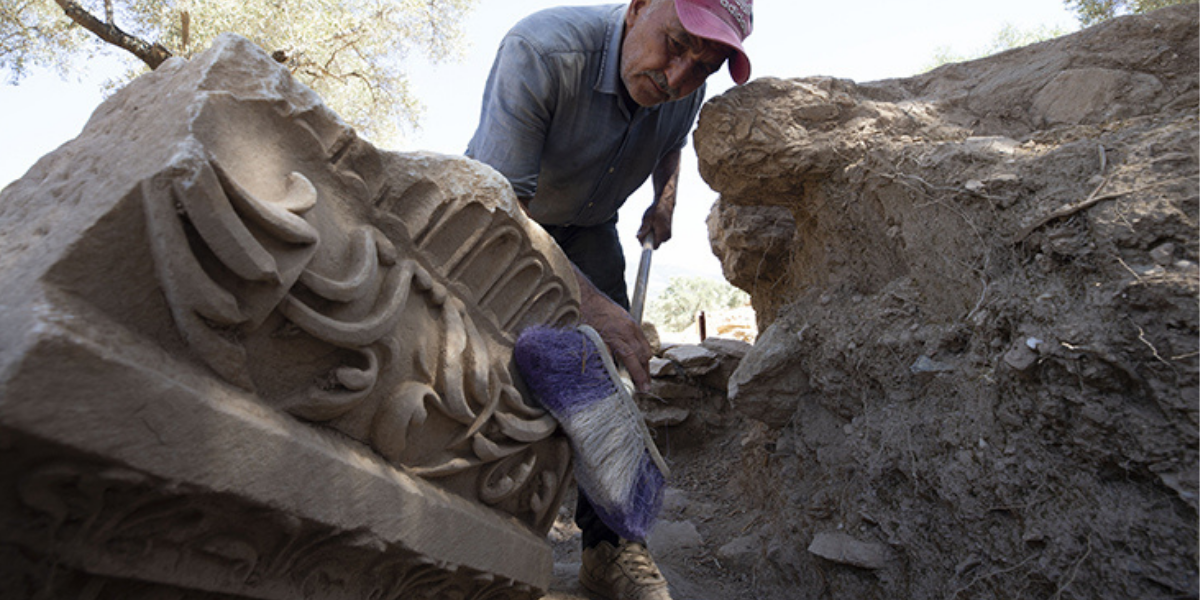
Forty-seven tombs dating back nearly a thousand years were found in the ancient city of Nysa
During excavations in the ancient city of Nysa, archaeologists uncovered 47 tombs dating back nearly 1000 years.
The ancient city of Nysa is an important ancient city dating back to the 3rd century BC, located in the Sultanhisar district of Aydın province in western Türkiye.
Nysa, one of the most important cities of the Caria region, was a famous city in ancient times, especially in the field of education. An important geographer like Strabo also studied here. The remains of the gymnasium and library in the city support this claim.
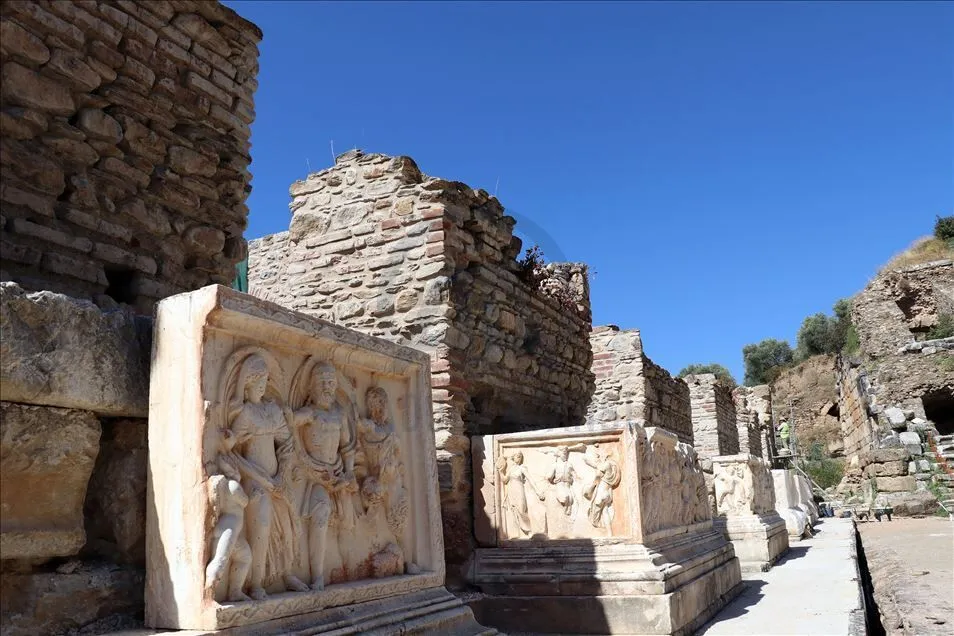
Founded in a sheltered valley north of the Menderes River, Nysa has an important position both commercially and militarily. It showed a great development during the Roman period.
Excavations in the ancient city of Nysa continue under the presidency of Prof. Dr. Serdar Hakan Öztaner from Ankara University, Faculty of Language and History Geography.
Prof. Dr. Serdar Hakan Öztaner said that they continue to work on the grid-planned street and street system of Nysa and that they are very excited that they have reached a street that connects to the main trade route on the route of Ephesus, Magnesia and Tralleis.
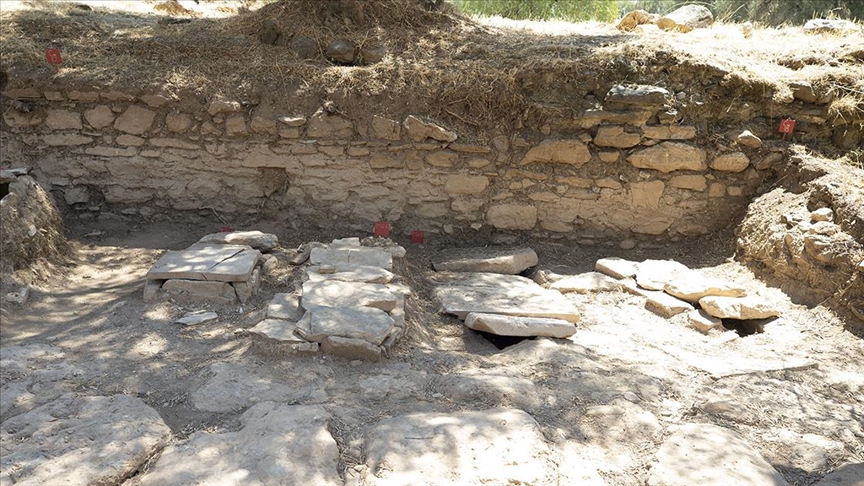
Öztaner said, “We found the north-south main street of the city, which connects the main trade route from Ephesus to Magnesia, Trallies and Tralleis. The street was used until the 7th century. We found 47 tombs in the upper filling soil of the street, which was buried after the earthquakes.”
Stating that the burials belong to the 11th century, Öztaner told AA correspondent.
“We found 47 late period tombs on the street line. The fact that there are mostly infant and child tombs among the tombs shows that there may have been epidemics in the city in the 11th century and life was difficult. We continue our research to determine this epidemic disease. It is understood that there were poorer, more irregular settlements in the last period of the city and the center of the city presents an abandoned appearance due to its use as a cemetery.”
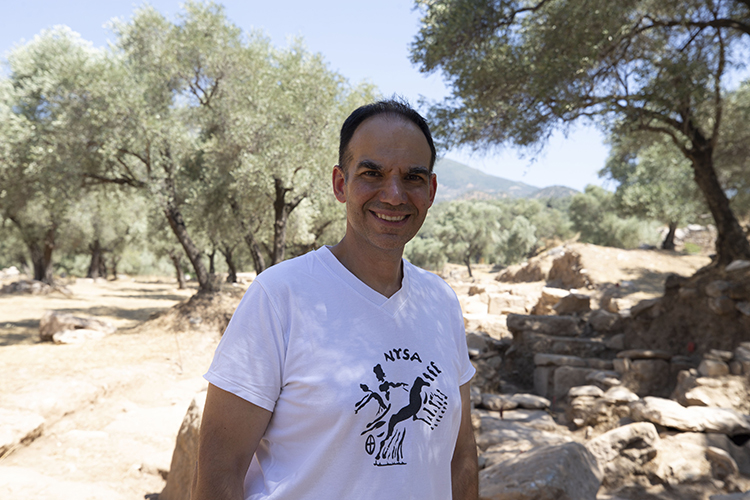
Explaining that one of the tombs is a chamber tomb, Öztaner said:
“When we opened this tomb, we found a piece of weaving stuck on a coin. It was probably made of flax and anthropologists determined that the owner of that tomb was a woman. She was about forty years old, and the threads had made her teeth jagged because she was weaving. These were of course exciting for us. It was also important that the weaving was preserved along with the corrosion of the coin. From the date of the coin, we have determined that the tombs belong to the 11th century.”
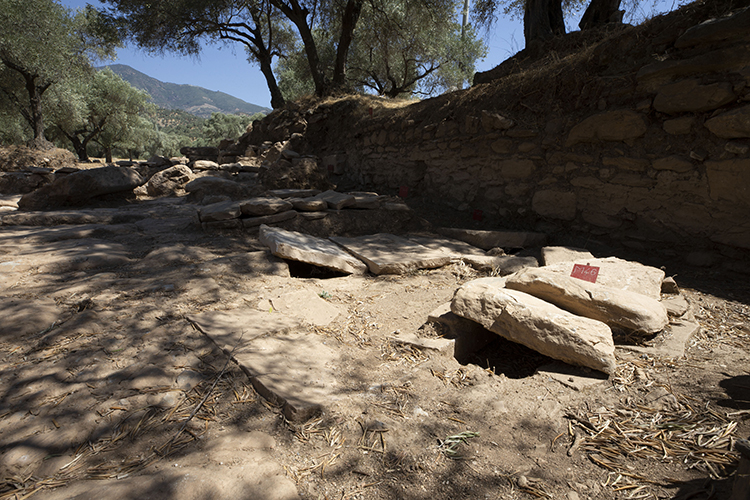
Referring to the importance of the street, Öztaner said, “The importance of this street is that it connects Nysa with the main road passing through the south. Therefore, if you had traveled from Ephesus, you would have entered the city through this street. Until when, until that devastating earthquake in the 7th century.”
Öztaner added that the length of the 2,000-year-old street exceeds 1 kilometer and that they are currently working on a 100-meter section.
Cover Photo: AA
You may also like
- A 1700-year-old statue of Pan unearthed during the excavations at Polyeuktos in İstanbul
- The granary was found in the ancient city of Sebaste, founded by the first Roman emperor Augustus
- Donalar Kale Kapı Rock Tomb or Donalar Rock Tomb
- Theater emerges as works continue in ancient city of Perinthos
- Urartian King Argishti’s bronze shield revealed the name of an unknown country
- The religious center of Lycia, the ancient city of Letoon
- Who were the Luwians?
- A new study brings a fresh perspective on the Anatolian origin of the Indo-European languages
- Perhaps the oldest thermal treatment center in the world, which has been in continuous use for 2000 years -Basilica Therma Roman Bath or King’s Daughter-
- The largest synagogue of the ancient world, located in the ancient city of Sardis, is being restored











Leave a Reply